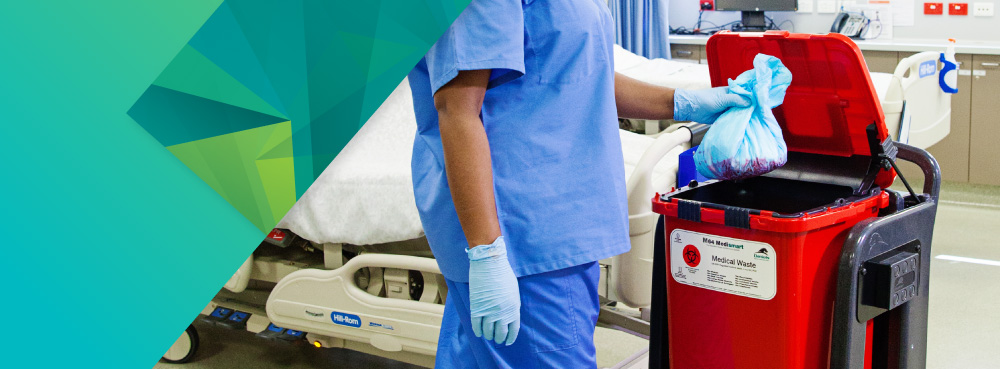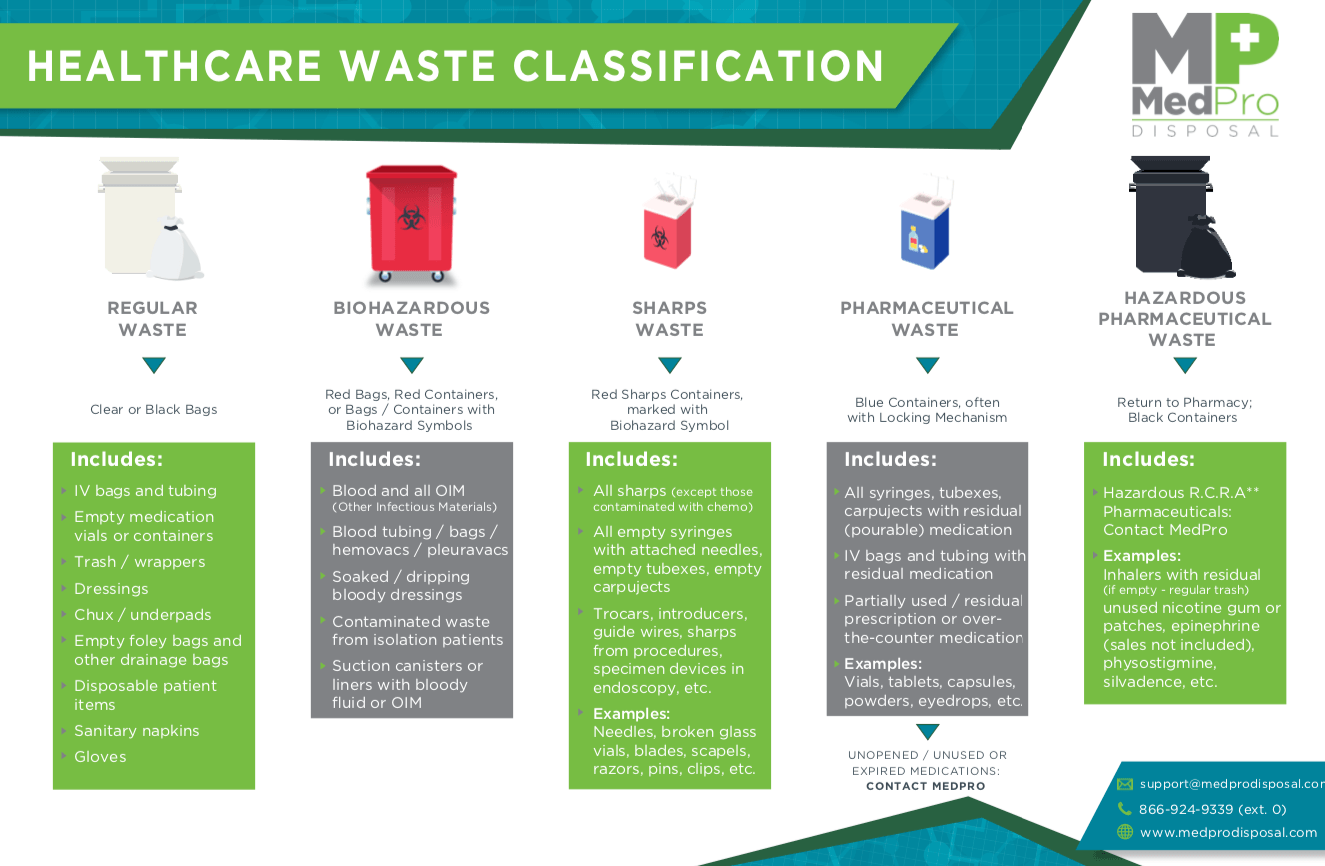Healthcare Health Heroes: The Unsung Duty of Medical Waste Removal Service
Healthcare Health Heroes: The Unsung Duty of Medical Waste Removal Service
Blog Article
Exploring Different Garbage Disposal Options for a Cleanser Atmosphere
In the pursuit of a cleaner setting, the administration of waste disposal has arised as a critical focal point for lasting development. With a plethora of waste disposal choices offered, varying from standard garbage dump approaches to innovative waste-to-energy innovations, the option of exactly how we manage our waste has far-ranging ramifications for our planet's well-being.
Recycling Techniques
Applying reliable reusing approaches is vital in decreasing waste and advertising sustainability in our environment. Recycling entails the procedure of transforming waste products right into multiple-use items to protect against unnecessary disposal. Among one of the most typical recycling methods is worldly recovery, where products like paper, glass, plastic, and steel are collected, sorted, and processed to create brand-new items. This procedure not only conserves natural deposits however also decreases power intake and greenhouse gas discharges associated with generating new materials from square one.
An additional crucial recycling technique is composting, which entails breaking down natural waste like food scraps and backyard trimmings into nutrient-rich soil. By incorporating these various reusing methods into our waste monitoring techniques, we can dramatically reduce our ecological footprint and relocate in the direction of an extra lasting future.

Composting Methods
Effective waste management methods, such as recycling approaches, pave the method for a cleaner atmosphere, and currently, shifting the emphasis to 'Composting Techniques', we explore sustainable means to decay natural waste for environmental benefit. medical waste disposal.
Composting is an all-natural process that transforms organic waste, like food scraps and yard trimmings, right into a nutrient-rich dirt amendment. The key to successful composting hinges on creating the appropriate equilibrium of green materials, such as fruit and veggie scraps, and brownish materials, like dried fallen leaves and twigs. These products disintegrate with the assistance of microorganisms, breaking down the waste into important garden compost.
Typical backyard composting includes layering organic products in a bin or stack and on a regular basis transforming the mixture to aerate it. By making use of composting techniques, we can reduce the quantity of waste sent to landfills while producing an advantageous item for enhancing dirt and sustaining plant development.
Incineration Disadvantages and pros
Incineration, as a garbage disposal approach, provides both benefits and negative aspects that warrant mindful factor to consider in the world of lasting waste management practices. On the silver lining, incineration can dramatically lower the volume of waste, decreasing the need for land fill space and possibly lowering greenhouse gas emissions. Incineration likewise enables the recovery of power via the generation of electrical energy or warm, adding to source healing. The process can be used to ruin harmful substances, providing a secure method for dealing with specific types of waste that might present threats to public wellness and the setting if left unattended.
Furthermore, the high preliminary financial investment and operational costs of incineration facilities posture financial difficulties, making it a less affordable choice compared to other waste monitoring approaches. Careful monitoring and regulation are important to alleviate these adverse influences and make the most of the benefits of incineration as component of an extensive waste monitoring technique.
Land Fill Monitoring Techniques
Landfills play a vital function in waste administration and environmental preservation by supplying a containment system for the disposal of solid waste products. Reliable land fill administration techniques are vital to reduce environmental impacts and guarantee the see long-term sustainability of these waste disposal sites. One key technique appertains waste compaction to maximize using available area within the land fill (click here). By compacting the waste, the volume is reduced, permitting even more waste to be accommodated gradually.
Moreover, the execution of everyday cover techniques is vital in reducing smells, stopping clutter, and decreasing the destination of bugs. Covering the disposed waste at the end of daily assists to include odors and prevent possible ecological contamination. Additionally, the tracking of land fill gas discharges and leachate levels is vital in making sure that ecological requirements are satisfied and that any type of prospective risks to bordering ecosystems are minimized.

Waste-to-Energy Technologies
Among the cutting-edge approaches to squander monitoring entails harnessing Waste-to-Energy modern technologies to transform solid waste right into useful energy resources. Waste-to-Energy (WtE) modern technologies incorporate a range of processes that intend to extract power from waste materials via thermal, chemical, or organic methods. This conversion procedure not just decreases the volume of waste that ends up in garbage dumps yet also produces valuable energy sources such as electrical energy, warmth, or biofuels.
Incineration entails melting waste at high temperature levels to generate heat and electricity. Gasification transforms waste right into a syngas, which can be made use of for power generation or chemical manufacturing.
Executing Waste-to-Energy innovations can assist minimize ecological concerns connected with traditional waste disposal methods while all at once supplying a sustainable power resource. Nevertheless, mindful consideration must be given to exhausts control and making sure the sustainability of feedstock materials for these innovations to be absolutely advantageous for a cleaner setting.

Verdict
Finally, discovering different waste disposal options such as reusing, composting, incineration, land fill monitoring, and waste-to-energy modern technologies is necessary for advertising a cleaner environment - click here. Each technique has its very own benefits and obstacles, yet by using a mix of these techniques, we can work towards minimizing the amount of waste that winds up in garbage dumps and eventually add to a much more lasting future for generations to come
With a plethora of waste disposal choices readily available, ranging from traditional land fill methods to cutting-edge waste-to-energy modern technologies, the choice of just how we manage our waste has significant effects for our world's wellness. medical waste removal.Incineration, as a waste disposal technique, provides both benefits and drawbacks that merit careful factor to consider in the realm of sustainable waste monitoring practices.Landfills play a vital role in waste administration and ecological conservation by supplying a control system for the disposal of strong waste products. By compacting the waste, the quantity is reduced, permitting for even more waste to be accommodated over time
One of the ingenious approaches to squander management includes using Waste-to-Energy innovations to convert solid waste into functional energy resources.
Report this page